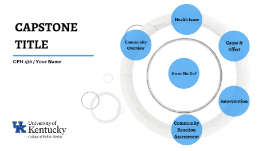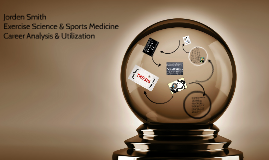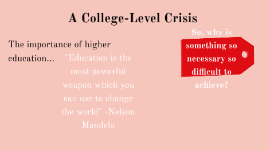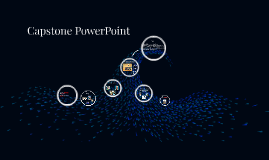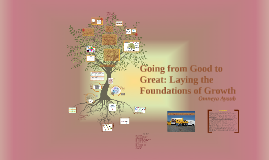Capstone Powerpoint
Transcript: Individuality vs. Togetherness Phase Two: Leadership Development Through Coaching Goals for Managing Self Background Goals for the Company Managing Myself Phase 1: Entry and Personality Phase 2: Creating a Vision Phase 3: Contracting KPI's Phase 1 Intervention Phase 2 Intervention KPI - Results Summary Background MBTI Leadership & Self-Deception (Scott, 2002) Covert Processes (Scott, 2002) Triangulation Power & Systems, 1978, p.3 (Gilbert, 1992) Arbinger Institute. (2000). Leadership and self-deception: Getting out of the box. San Francisco: Berrett-Koehler. Block, P. (2011). Flawless consulting a guide to getting your expertise used (3rd ed.). San Francisco, CA: Jossey-Bass/Pfeiffer. Butler, T., & Waldroop, J. (2001). Managing Away Bad Habits. Harvard Business Review, 89-98. Retrieved from http://harvardbusinessonline.hbsp.harvard.edu Gilbert, R. (1992). Extraordinary relationships: A new way of thinking about human interactions. New York, NY: John Wiley & Sons. Goffee, R., & Jones, G. (2005). Managing Authenticity: The Paradox of Great Leadership. Harvard Business Review, 1-8. Goleman, D. (2000). Leadership that gets results. Harvard Business Review, 78-90. https://www.haygroup.com/downloads/fi/leadership_that_gets_results.pdf Dezieck, J. (2010). The four room apartment model of change for understanding and choosing action strategies. Retreived October 7, 2014, from https://wildcats-dev.mit.edu/learning-development/learning-topics/change/articles/four-room Kaner, S., & Lind, L. (1996). Facilitator’s guide to participatory decision making. Philadelphia, PA: New Society. Kotter, J. (2001). What leaders really do. Harvard Business Review, 3- 12. Levin, I. (2000). Five windows into organization culture. Organization Development Journal, 18(1), 83-92. Lask, M., & Norlin, P. (2008, May 1). The coach as witness: A new look at coaching. Maccoby, M. (2004). Narcissistic Leaders: The Incredible Pros, the Inevitable Cons. Harvard Business Review, 1-9. Retrieved from http://harvardbusinessonline.hbsp.harvard.edu Marshak, R. (2006). Covert processes at work managing the five hidden dimensions of organizational change. San Francisco, CA: Berrett- Koehler Marshak, R. (2006). Organizational development as a profession and a field. In The NTL handbook of organization development and change. San Francisco, CA: Pfeiffer. Myers-Briggs, I., & Cook, K. (n.d.). The Myers & Briggs Foundation – MBTI® Basics.Retrieved April 4, 2015 http://www.myersbriggs.org/my-mbti-personality-type/mbti- basics/ Oshry, B. (2007). Seeing systems unlocking the mysteries of organizational life (2nd ed.). San Francisco: Berrett-Koehler. Power and Systems - Self-in-System Sensitizer. (1978, January 1). Retrieved April 30, 2015, from http://www.powerandsystems.com/component/content/article/50- articles/257-self- in-system-sensitizer.html Scott, S. (2002). Fierce conversations: Achieving success at work & in life, one conversation at a time. New York, NY: Viking. Tharp, B. (2009, April 1). Four organizational culture types. Retrieved From http://www.haworth.com/docs/default-source/white-papers/four-organizational-culture-- types_6-pdf-28545.pdf?sfvrsn=6 Whitney, D., & Bloom, A. (2010). The power of appreciative inquiry a Practical guide to positive change (2nd ed.). San Francisco, CA: Berrett-Koehler. Managing a Triangle Recognize one has formed. Identify position in the triangle. Learn how to shift the triangle. Phase One: Culture OUTLINE Going from Good to Great: Laying the Foundations of Growth (Arbinger Institute, 2000) Design Goals: Paraphrasing - Tracking - Establishing Common Ground WHY? Designing a meeting for his employees to share his vision, they can all work towards a common, and transform his vision into a reality. Tap into Ashraf’s leadership skills. RESULTS Meeting design for the future! Appreciative Interviews Summary Phase Three Contracting Sustainability Binder Source of Reference for Client Foundation for Growth Reduces Time Needed to Invest in Managment (Marshak, 2006) Ashraf Ayoub General Contracting LLC - Relationship is based on little togetherness. - Neither one wants to shift their individuality. - Need to explore each self in an open relationship to each other. Control/Compete Culture Autocratic (Kaner, 1996) The Perfect Storm Eslam's return into the company. Ashraf's departure overseas. Resolution of over-functioning and under-functioning relationship. Results Gain in confidence to make decisions. Create relationships as a leader to his employees. Take on bigger responsibilities. Meeting Design Parameters Differentiation Phase Two: Appreciative Inquiry (Whitney, 2010) (Gilbert, 1992) Above the Table Topics openly expressed Under the Table Topics never mentioned Chris Argyris, then popularized in The Fifth Discipline Fieldbook (1994) by Peter M. Senge and others. Intention: understand the owner, the culture, and the employees to help them transform from good to great on their journey to success. Become more organized, relay






